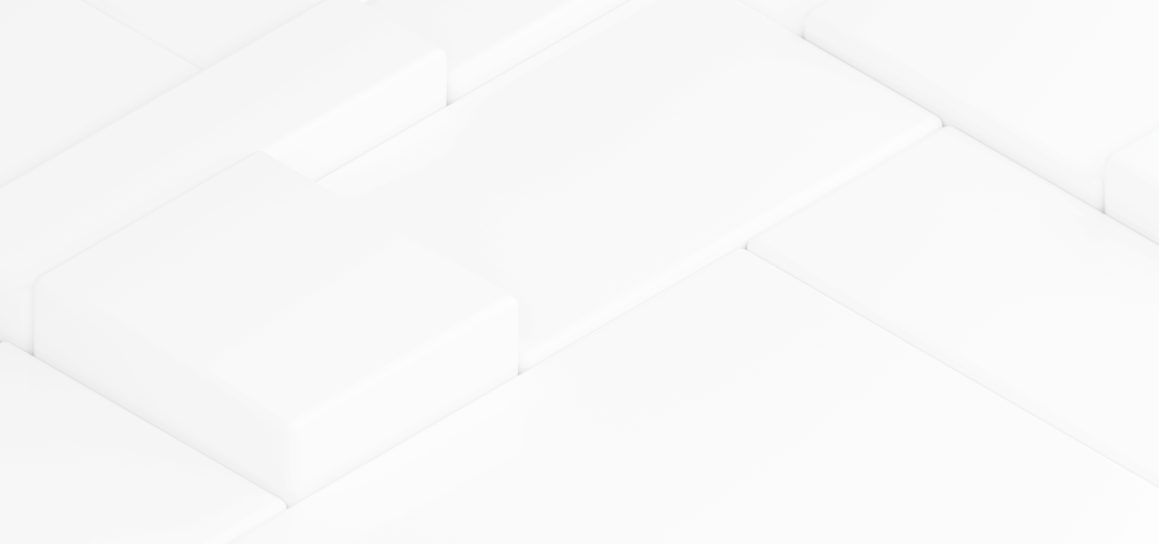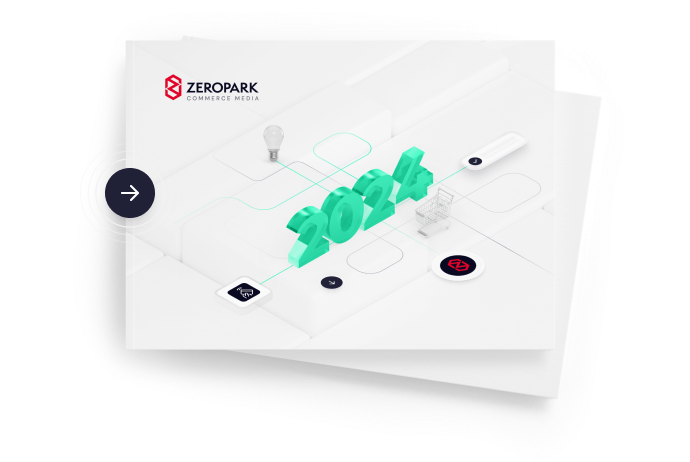It’s been a few months since we’ve launched Push Ads, and it’s been a hit from day one. The power of Zeropark’s push notification ads reflects in thousands of active and profitable campaigns, resonating among the community and on affiliate forums.
We’re going to wrap up and share the most valuable follow-alongs published by community leaders so you can learn from the best. So look out for tips and lessons, in order to take your push campaigns to another level!
In the series-opening article, we take a look at the campaign ran by Servando Silva. Servando is an experienced affiliate and a moderator at the Affiliatefix forum. Without any further ado, let’s dive into Servando’s week with Push Ads.
Preparations
Servando decided to go with sweepstakes CPL offers with a high payout ($6-$12). This just made perfect sense for at least three reasons.
Firstly, these are one of Servando’s favorites. He ran plenty of such offers, understands their mechanisms well, and thus feels comfortable with them. “Find your niche” is one of the keys to success in affiliate marketing.
Secondly, sweeps is one of the top verticals in Push Ads and Zeropark overall when it comes to performance.
Finally, high-payout offers not only bring larger profits (duh) but also tend to work pretty darn good with Zeropark’s traffic.
Here’s a piece of advice directly from Servando, before you launch your campaign:
Analyze the available traffic volume for each geo and select 1 or 2 with hot offers for test.
Setup everything to track the campaigns. I’ll use Voluum (get a 25% discount here) in this case as it integrates seamlessly with Zeropark and the events aren’t charged there. Plus, I always wanted to test the new AI features that were introduced a few months ago.
Prepare 2-3 landers and 2-3 offers initially to get some data.
Do some research and think of a few headlines/images for the push notifications. Zeropark allows you to split test 5 creatives (Ed. Note: you can now split test up to 10 creatives in Zeropark) at the same time with your push traffic, which is way better than cloning a lot of campaigns just to set different creatives as I do in other networks. I’ll do my research in native ad networks mostly as the traffic is very similar there.
Ideally I’ll start with a budget of $20-40 per day and increase it as the campaign gets conversions and we optimize them if we can.
DAY 1: Campaign Setup
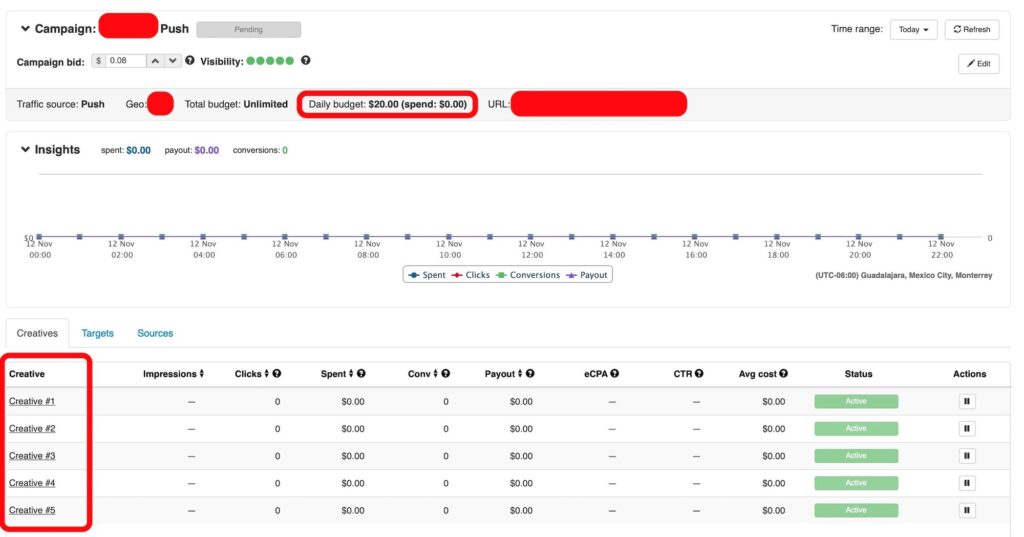
In the image above you can see the dashboard of Servando’s freshly set up campaign. He went with a Tier 1 country as his target, because high-payout offers often require the highest quality traffic.
Of course, selecting a Tier 1 geo means a higher level of competition (so you need to increase your bid to buy traffic), but it also gets you a higher volume, and thus, better optimization opportunities.
Servando’s daily budget was set initially at $20, and the CPC bid was $0.08, which is the recommended minimum if you want to run your campaigns in Tier 1 geos. Bidding above the minimum rate will open up more expensive sources for your campaigns.
As you can see, he had the traffic distributed to 5 ad variants. This adds another layer of optimization to your Push campaigns in Zeropark, especially that now, you can even have up to 10 creatives running simultaneously. The images Servando used for his push ads were either simple icons or pictures of women.
Servando was also using a landing page as this tends to bring better results than direct linking for most offers.
As for the tracking, Servando used the Traffic Distribution AI feature in Voluum, which analyzes the performance of your offers, landing pages and paths in real time, and automatically redistributes the traffic to the best converting ones, so you can increase your ROI without spending hours crunching the numbers yourself.
Here’s how it looked in Voluum:
![]()
DAY 2: First Conversions
Once the traffic started to flow, the visibility of the campaign was ranked at four points (five being the maximum). Servando decided to turn it up a notch, increasing his initial bid of 8 cents to $0.099 per click.
Having achieved the max visibility, the campaign already started to convert before it even spent 20 cents.
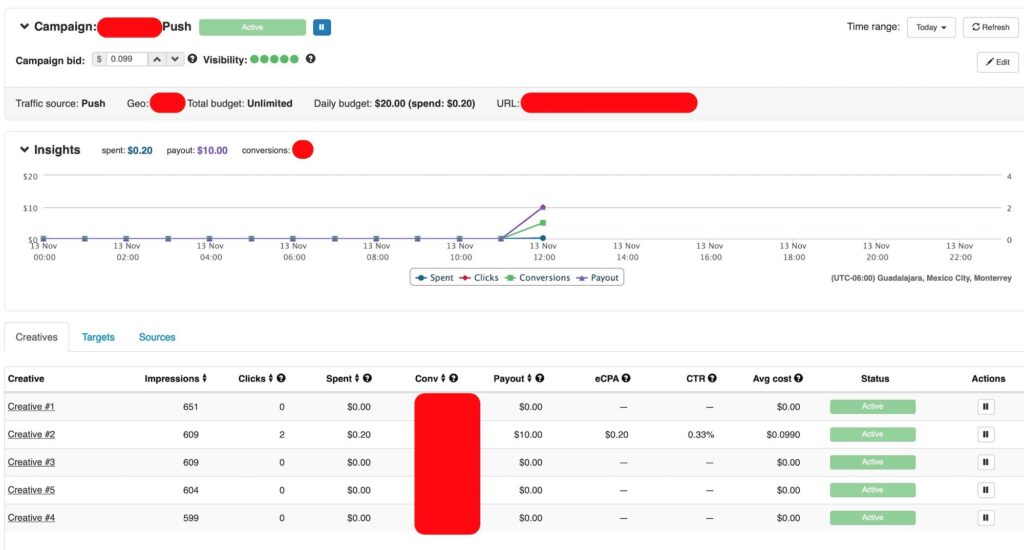
At the end of day, the campaign was able to spend $10 (it didn’t reach its daily budget since it was launched halfway through the day) and made $70 worth of conversions.
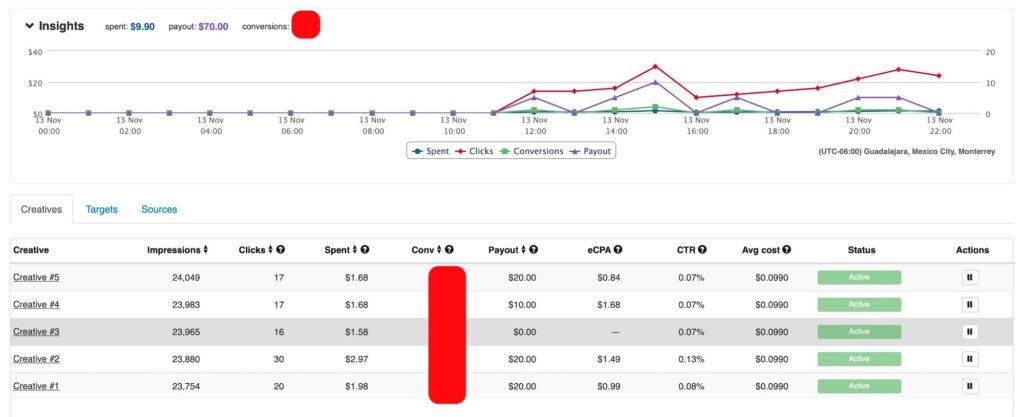
Interestingly, all but one creative brought conversions (notice the creative #3 in the picture below). Not rushing his decisions, however, Servando decided to stick with it for a little while.
DAY 3: Scale up!
The third day of buying traffic pretty much resembled the previous one, with no action taken by Servando until late in that day. The campaign spent $17 and made $76.
The profitability of the campaign on a small budget made Servando want to scale up. He paused the subpar creative number three, and increased the daily budget to $100 while also increasing the campaign bid a bit.
Here’s how it looked right after the changes were made.
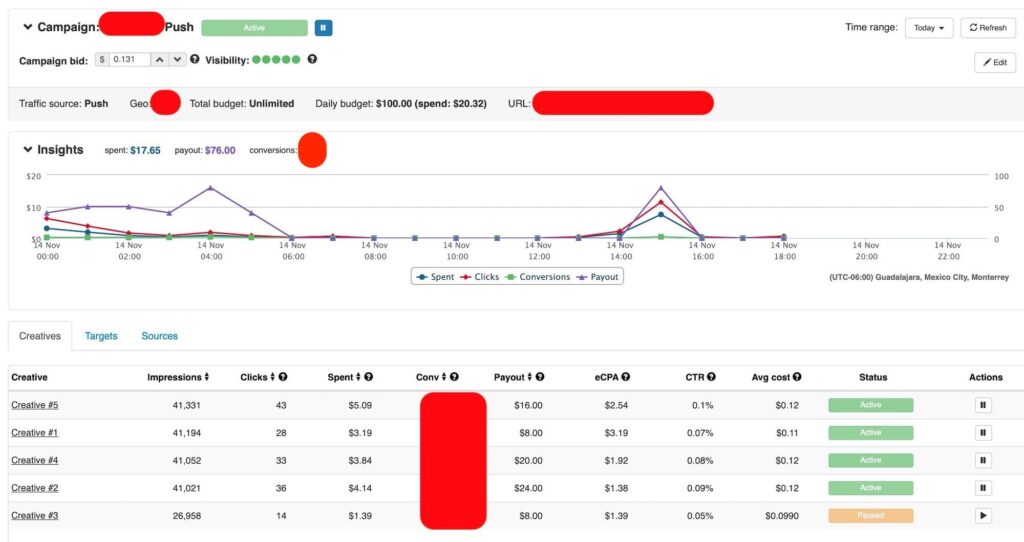
DAY 4: Traffic Analysis
On the fourth day, the campaign spent nearly all ($97.2) of its daily budget. This resulted in a revenue of $144, an ROI of 48% and a proof of Push Ads scalability in Zeropark.
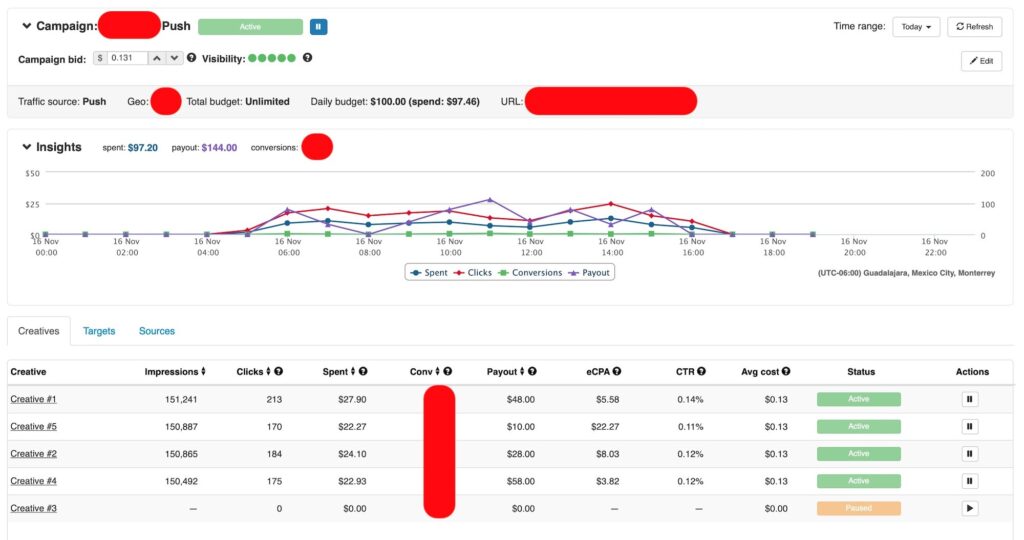
These are already good results even without optimizing the campaign (apart from pausing the least performing creative). Being a savvy affiliate, Servando moved on to analyzing and maximizing his profits.
The sources tab in Zeropark (screen below) allows you to take action on individual publishers (website owners whose traffic propels your campaigns).
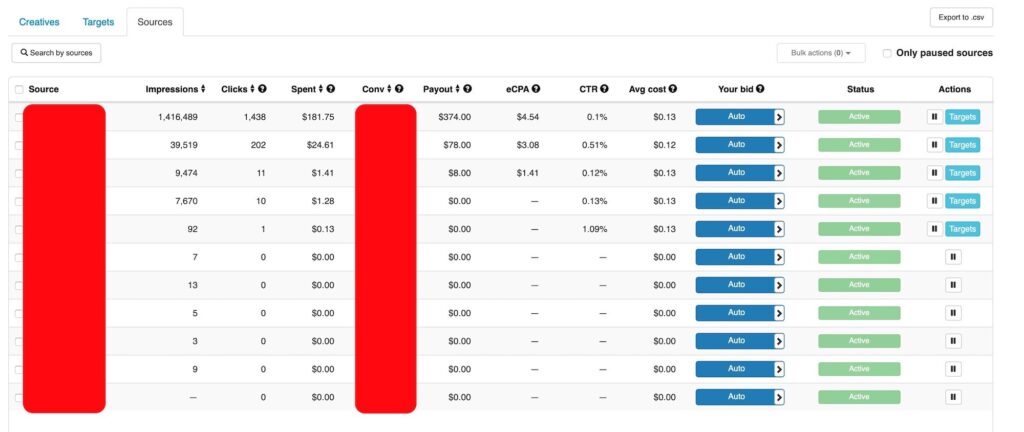
A thorough review of the sources tab, however, didn’t reveal a true poor performer. As most of the traffic for this campaign was coming from two sources, those that didn’t convert barely spent any money.
The targets tab (displaying individual websites from which the traffic is bought) at this stage wasn’t of much help either. Most of the websites were profitable, others either didn’t spend much or didn’t have any clicks (so didn’t spend anything).
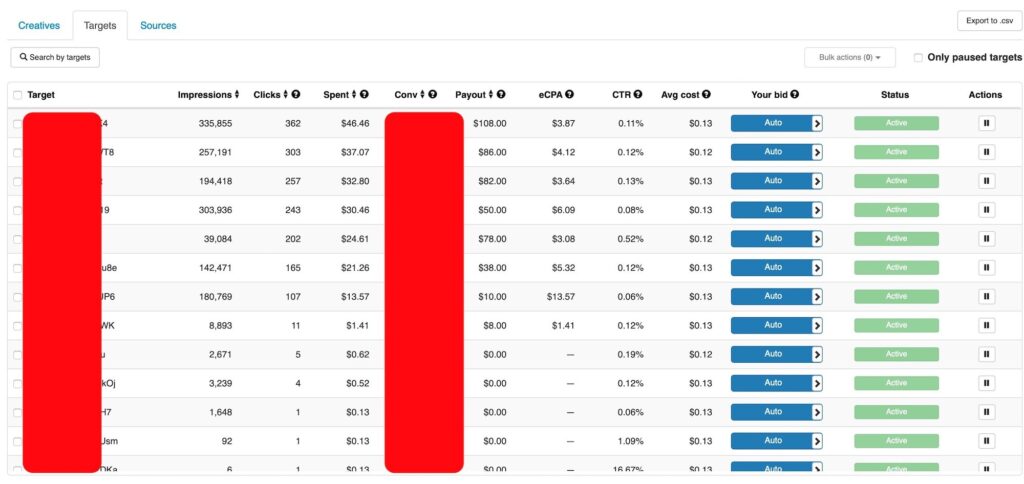
There’s only one target that wasn’t profitable despite spending a double-digit amount of dollars. Servando decided to keep it alive until it spent $20 and reevaluate then.
DAY 5: Optimization
Servando started off the fifth day by doubling the daily budget. By the evening the campaign had spent $171.2 and made $310, pushing the ROI to 81%.
Additionally, the least effective creative (highest eCPA, lowest CTR) of the four that were left was paused early in the day to further optimize the campaign.
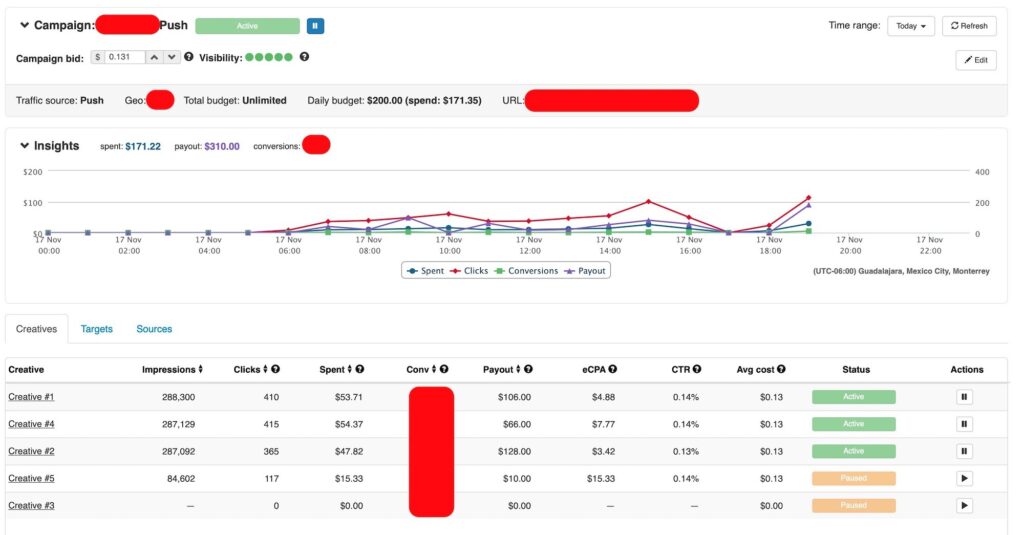
Seeing the promising results, Servando once more upped the budget around 7pm, this time to $250. It resulted in an instant burst of traffic, making the campaign spend $207 at the end of the day.
The final results of Day 5 were:
Spend: $207
Revenue: $454
ROI: 119%
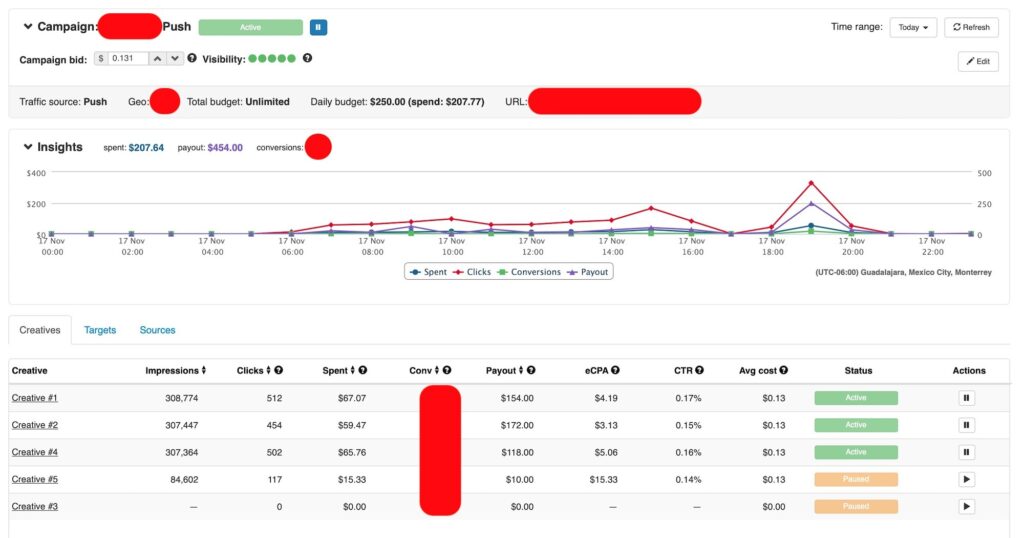
DAY 6: The Road to $10k Monthly Profit
On day 6 we’re looking at some optimization opportunities first. Let’s revisit the targets tab.
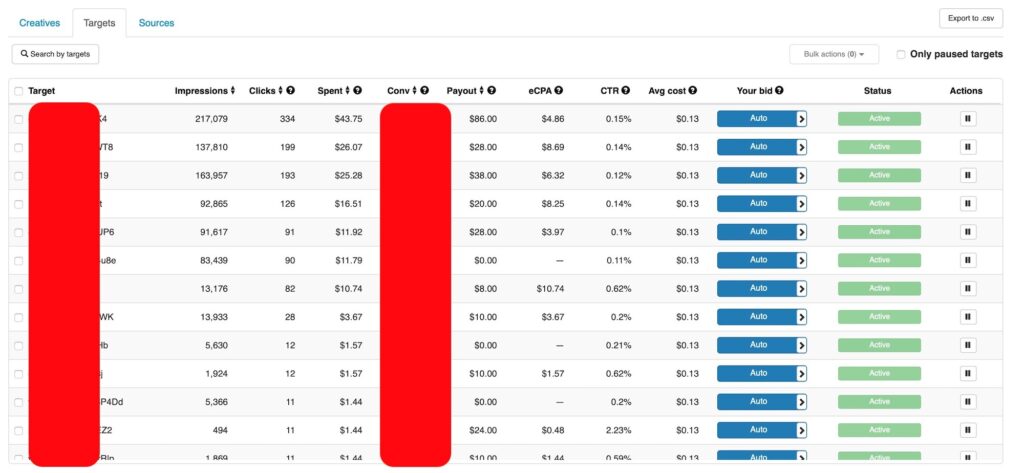
Nothing revealing at that point, although there are a couple worth further observation ($10.74 and $11.79 spent on them respectively).
Another day, another budget increase. Servando doesn’t play around.
Seeing the campaign cap out early in the evening, he put in more money. This time his budget rose to $300 a day. The results?
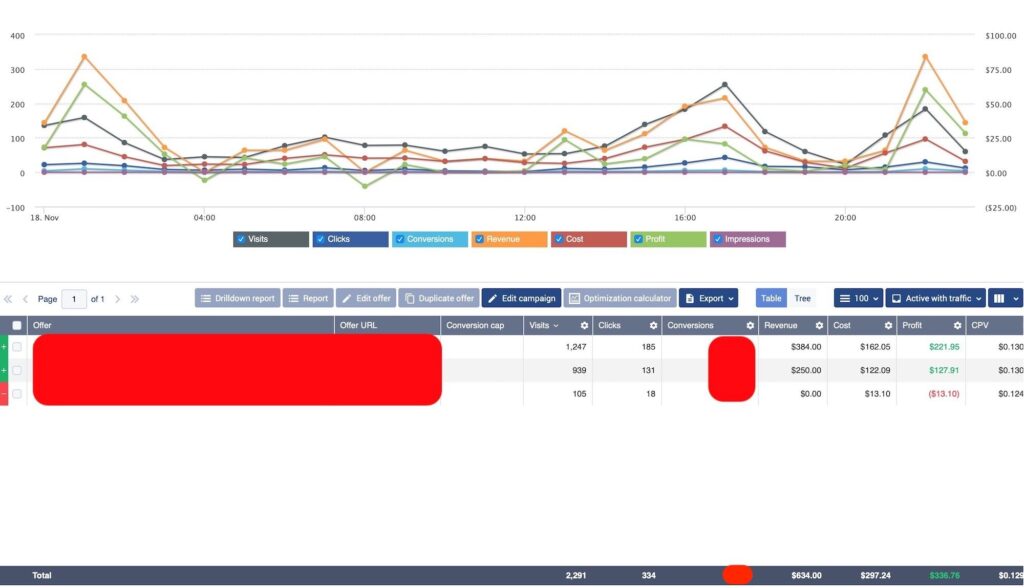
Ad spend: $297
Revenue: $634
ROI: 113%
Profit: $336
With the daily profit this big, the campaign was already on pace to reach a monthly profit of $10k.
DAY 7: Weekly Results
On the seventh day of the campaign, Servando went to analyze browsers’ performance in Voluum.

You can easily notice that Chrome Mobile and Samsung’s mobile browser were bringing outstanding results.
Let Servando drop some wisdom on this himself:
“The difference between Chrome and Chrome Mobile as per my stats is that Chrome is Android traffic from tablets while Chrome Mobile is smartphones mostly. So this campaign seems to work better on smartphones and that’s good because there’s more volume there.”
When you start your Push Ads campaign in Zeropark, you can choose to target Android smartphones, tablets or both. You can even select the OS versions you want to buy traffic from.
Time to wrap this case study up. Here they are, the results of Servando’s 7-day Push Ads campaign in Zeropark:
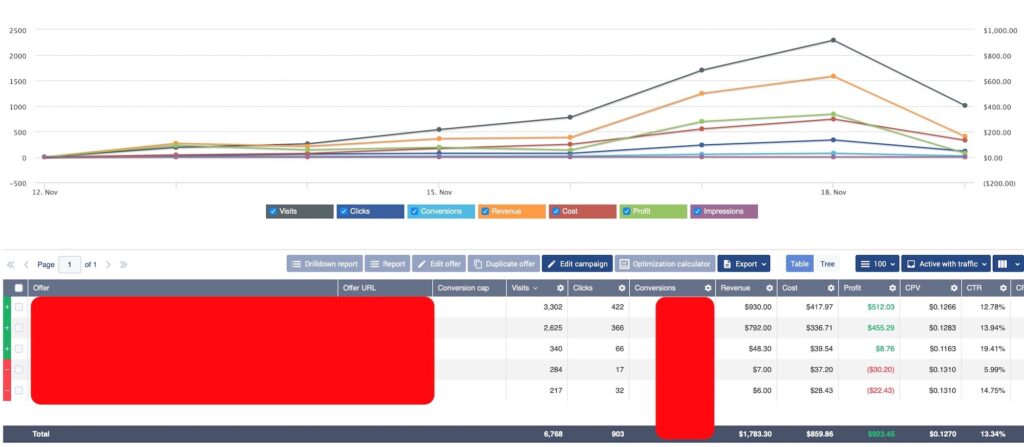
Ad spend: $859
Revenue: $1,783
Profit: $923
ROI: 107%
Conclusions
Servando has proven that Zeropark’s push notification ads are scalable (he gradually went from a daily budget of $20 up to $300). The daily results when the budget was set at $250 and later at $300 show that you can easily scale your campaigns to a $10k/month profit rate.
Let’s hear what the man himself had to say about his experience running Push Ads in Zeropark:
“I’ve been working with Zeropark for the last 5 years and they’ve done a wonderful job with their system UI and dashboard. Overall it’s one of the easiest traffic sources to work with thanks to the filters available, automation and campaign creation process which is quite transparent. Push notifications are kinda new and there are many new traffic sources promoting their push traffic, but Zeropark easily allows you to filter things such as browsers, devices, OS and targets/websites so you can squeeze your profits without problems. Also Zeropark allows you to evenly split test 10 different creatives per campaign, making it easy to find your winner creatives and scale your campaigns up!” – Servando Silva.
The ability to accurately target your audience, seamlessly scale your campaigns and optimize them by running up to 10 simultaneous creatives or starting whitelist campaigns makes Zeropark the go-to push advertising platform for thousands of affiliates all around the globe.
Want to be as successful as Servando? Or do you think you can do even better?
Get the best push traffic from Zeropark – the ad network recommended by the pros.
SIGN UP TO ZEROPARK NOW
KEY TAKEAWAYS:
- Servando’s campaign proved the scalability of Zeropark Push Ads campaigns (from a $20 budget to $300 per day).
- In just a few days he put the campaign on track to reach a monthly profit of $10k.
- In the 7 days he ran this campaign – including the setup, an initial daily budget of $20, and a bit of optimization – he made $923 with an ROI of 107%.
The original thread of this follow along can be found here.



